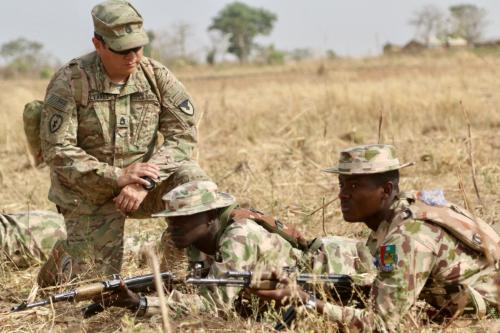The pressure of a self-imposed deadline— already extended once from its original July date — proved insufficient to overcome the considerable differences between Iran and the six world powers in negotiations on Iran’s nuclear program. Yesterday’s decision to extend the talks for an additional seven months gives the hard-won negotiating process some breathing room, but it does not offer a real solution to the fundamental impediment to a comprehensive deal, Tehran’s unwillingness to compromise on the central dimensions of its nuclear activities.
After a year of intensive, high-level diplomacy, the continuing failure to find a mutually agreeable formula for resolving the central issues at stake raises doubts about whether the protracted impasse is indeed reconcilable. Call it what it is — a deadlock, perhaps even an intractable one. The prospects for a durable agreement to end the nuclear crisis are waning; instead, the world may be forced to settle for crisis management with Iran rather than conflict resolution. In the short term, this would be a tolerable alternative for Washington, and may even be a preferable one for the Iranian leadership. But it would be a tragedy for Iran.
All sides have sought to paint a positive picture of yesterday’s decision. U.S. Secretary of State John Kerry offered a thoughtful defense of the diplomatic process and a bullish view of the implications of the interim agreement for the overall regional environment. For its part, Tehran preemptively declared a day of victory even before the outcome had been announced, and Supreme Leader Ayatollah Ali Khamenei exalted today that “the arrogants had not brought Iran to its knees.”
Still, the outcome was cast in disappointment and frustration — a marked contrast to the sense of historic breakthrough that characterized the signing of the interim nuclear agreement known as the Joint Plan of Action (JPOA) only a year ago. If time was the problem, than yesterday’s decision to extend the talks would represent an encouraging step forward. But as Kerry himself conceded, “These talks aren’t going to suddenly get easier just because we extend them.”
In fact, it is just the opposite. Unfortunately, the fragile equilibrium that has been achieved over the course of the past year simply cannot hold; the imminent inauguration of a Republican-controlled Congress, the forward march of Iran’s nuclear research, and the exigencies of a regional civil war in which Washington and Tehran are directly engaged – these are simply the most obvious of the many factors that will conspire to complicate what is already an excruciatingly thorny problem in the ensuing seven months.
Diplomacy’s Path From Celebration to Stalemate
The obvious question is what went wrong? In some respects, nothing did – many (including Brookings Foreign Policy’s Robert Einhorn) cautioned from the outset that the differences between Iran and the international community on the size and scope of its nuclear activities would not be overcome quickly or easily. After all, Iran’s nuclear ambitions have been the focus of active diplomacy since 2002, and most of those efforts have come up empty. A year ago, after the interim accord known as the Joint Plan of Action (JPOA) was signed, even I hedged that “nothing is inevitable.”
Still, for many – myself included – the June 2013 election of President Hassan Rouhani and the intensification of direct dialogue between Washington and Tehran that followed in its wake heralded an unprecedented opportunity to end the previous decade’s deadlock. Tehran’s acceptance of a broad freeze on its nuclear activities, as codified in the JPOA, in exchange for relatively limited sanctions relief, seemed to signal a readiness on the part of its leadership to put a long-awaited end to the crisis.
The year-long effort to achieve that objective raises real doubts about Iran’s presumptive readiness. Iranian leaders may want an end to the nuclear impasse and the associated economic pressure — after all, Rouhani campaigned on this very issue — but they remain unwilling to sacrifice even a single centrifuge to achieve it.
Over the course of recent months, particularly since Khamenei publicly advocated an even more ambitious enrichment capacity as an Iranian “red line,” the United States and its international partners have put forward a series of “creative” technical proposals aimed at bridging the gap. But to date, there has been no corresponding flexibility from the Iranian side on the issue of enrichment.
Tehran may have been counting on a combination of domestic political pressures and foreign policy ambitions to push the Obama administration into accepting an agreement with less stringent constraints on Iran’s enrichment capabilities. The Iranian press has reveled in the Democrats’ losses in recent mid-term elections, and some have speculated that a weak Obama administration might be particularly eager to finalize a deal with Iran before the new Republican-controlled Congress takes office in January.
If indeed Tehran’s refusal to budge was brinkmanship, it was a tactical miscalculation that can still be remedied with quick Iranian cooperation in the next phase of talks. Increasingly, however, it seems that whatever application of realism led Khamenei to endorse the interim agreement may have simply evaporated. And if Iran’s tenacious attachment to the enrichment program and product continues unabated, there will be no comprehensive deal in seven months or seven years.
Extending the Process — and the Pain
If the current diplomatic framework cannot deliver a deal, this need not spell the death knell for diplomacy. Neither side will prove eager to leave the table. For Tehran, the dialogue remains the only mechanism for tapping into its tens of billions in oil revenues currently inaccessible due to financial sanctions, and for prying open at least some avenues for international trade and investment.
Among the P5+1, there is simply no possibility of abandoning talks; among the available alternative policy instruments, diplomacy is the only course likely to generate any kind of consensus. Should a final agreement remain out of reach, the possibility of devising some new and improved interim measure to avoid a collapse of diplomacy has already entered the debate.
After all, there is grudging acceptance among even its fiercest initial critics that the JPOA has had some tangible benefits in terms of slowing Iran’s nuclear program at relatively little cost to the sanctions regime. And while a Republican Congress would be hostile to the prospect of long-term management of a security concern perceived by most as urgent, it may not be beyond persuasion. The current American political climate is not particularly conducive to trigger-happy Congressional activism, and a presidential election looms less than two years away.
Still, any short-term fix, including the latest extension, offers a distinctly inferior solution to a comprehensive agreement. In the absence of a final deal, all or most of the sanctions that have slashed Iran’s oil revenues will remain in place. International adherence to the measures may fray around the edges, particularly if the incoming Republican Congress adopts provocative new measures. But the genius of the post-2006 American sanctions regime is that it subtly forces the world to choose between the Iranian and the U.S. markets. This is hardly a choice at all, and so without a deal most reputable investors and companies of any significance will continue to avoid Iran, even in cases of authorized transactions.
The Islamic Republic can and almost surely will survive the perpetuation of sanctions for the next seven months and probably much longer. Despite an always boisterous political debate among the fractious leadership, there is greater consensus on key foreign policy issues – including the nuclear issue – today than at any point in the country’s recent history. And Iran’s diversified economy and its experience in imposing austerity will enable the state to muddle through the hit to its budget from sanctions and falling oil prices.
Instead, the price will be paid, as it has since 1979, by ordinary Iranians, for whom the current extension means a continuation of lower growth rates, fewer jobs, less stability in the currency, more shortages and higher prices, and fewer opportunities to interact with the rest of the world.


Commentary
For the Iranian Nuclear Talks, a Deadline Reveals a Deadlock
November 25, 2014